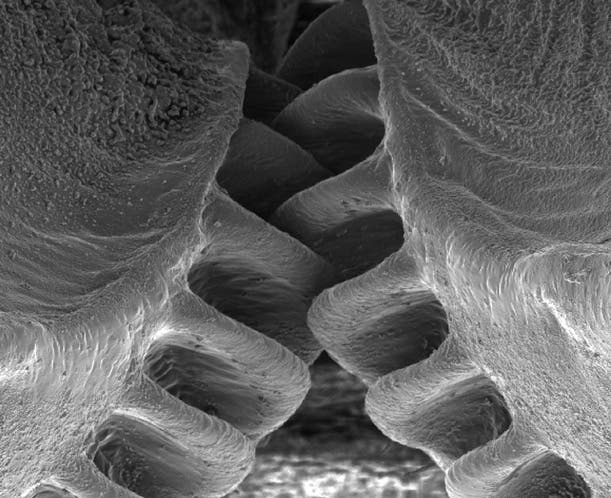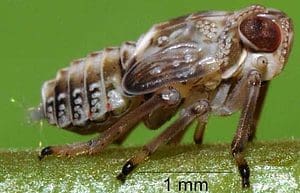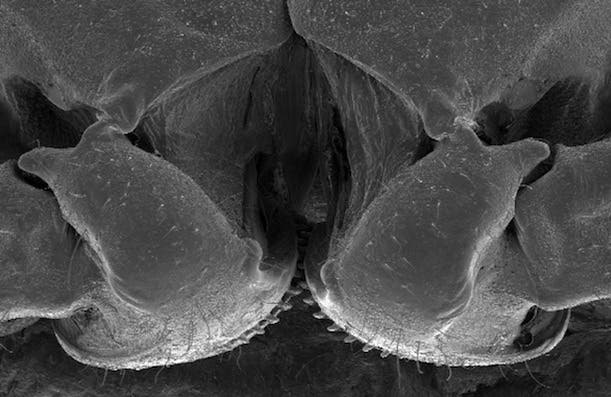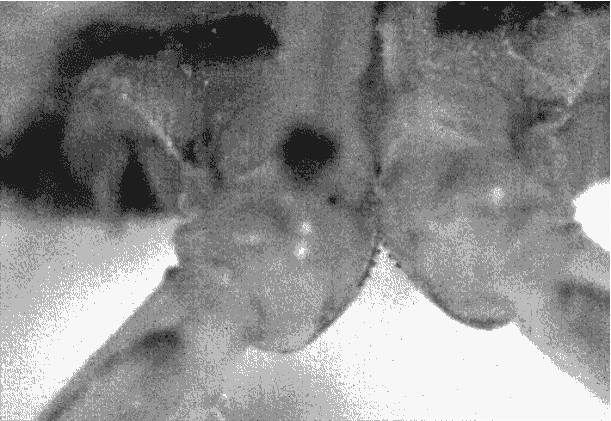
The Issus coleoptratus or issus for short is a small hopping insect that can leap at tremendous speeds and lengths compared to its tiny size. Actually, it’s one of the fastest accelerating creatures known to biologists, capable of accelerating at nearly 400 g’s—a rate more than 20 times what a human body can withstand. To achieve this fascinating feat the issus performs a perfectly synchronized kick of his hind legs to propel it forward at dazzling speeds, and this perfect timing is made possible using a minuscule pair of interlocking teeth-like structures. The resemblance to a man-made mechanical gear is striking and as two UK researchers recently reported in a paper published in the journal Science, its working principle is similar as well.

The involute gear, the precursor to virtually all types of gears today, was first introduced by Swiss mathematician Leonhard Euler in the 18th century. Nature, however, beat us to it long time ago judging from the biological gears the issus is sporting. The three-millimeter hoping insect uses these gears to lock its back legs together, allowing both appendages to rotate at the exact same instant, causing the tiny creature’s jump forward.
“In Issus, the skeleton is used to solve a complex problem that the brain and nervous system can’t,” said Malcolm Burrows in a press statement.
“This emphasises the importance of considering the properties of the skeleton in how movement is produced.”
“We usually think of gears as something that we see in human designed machinery, but we’ve found that that is only because we didn’t look hard enough,” added co-author Gregory Sutton, now at the University of Bristol.
“These gears are not designed; they are evolved – representing high speed and precision machinery evolved for synchronisation in the animal world.”

High precision indeed: each gear features between 10 and 12 tapered teeth, each tooth is about 80 micrometers wide helping mesh the two gears neatly. Fascinating enough, each gear tooth has filleted curves at the base, a design feature incorporated in all modern gears since it reduces wear. The gear aren’t exactly like any type of mechanical gear made by humans – they’re made for “high precision and speed in one direction,” Sutton says. “It’s a prototype for a new type of gear.”

The gearing is most definitely an elegant solution found by nature to help the issus achieve its fast and accelerated jumps. Actually, the issus engages its gears before the jumps happens, locking them together in under 30 milliseconds (1/300,000 seconds)! What truly mysterious about the issus, however, is that these gears are only present in adolescent individuals. During its development stages, the issus molts about half a dozen times, making changes and adjustments to its exoskeleton each time – gears included, which grow larger and larger with the issus itself. By the time it grows into adulthood, however, the issus loses its gears. The researchers have a possible explanation for this. If one of the gear tooth breaks, then it will severely affect the issus’ leaps, indispensable to its survival at the face of predators. An adolescent can afford to have one or more of its gear teeth to break, since it replaces them every time it molds. The adult stops molding, though, so its ineffective for it to keep the gears – it’s just too risky! “Just like if your car has a gear train missing a tooth. Every time you get to that missing tooth, the gear train jerks,” Sutton says.


